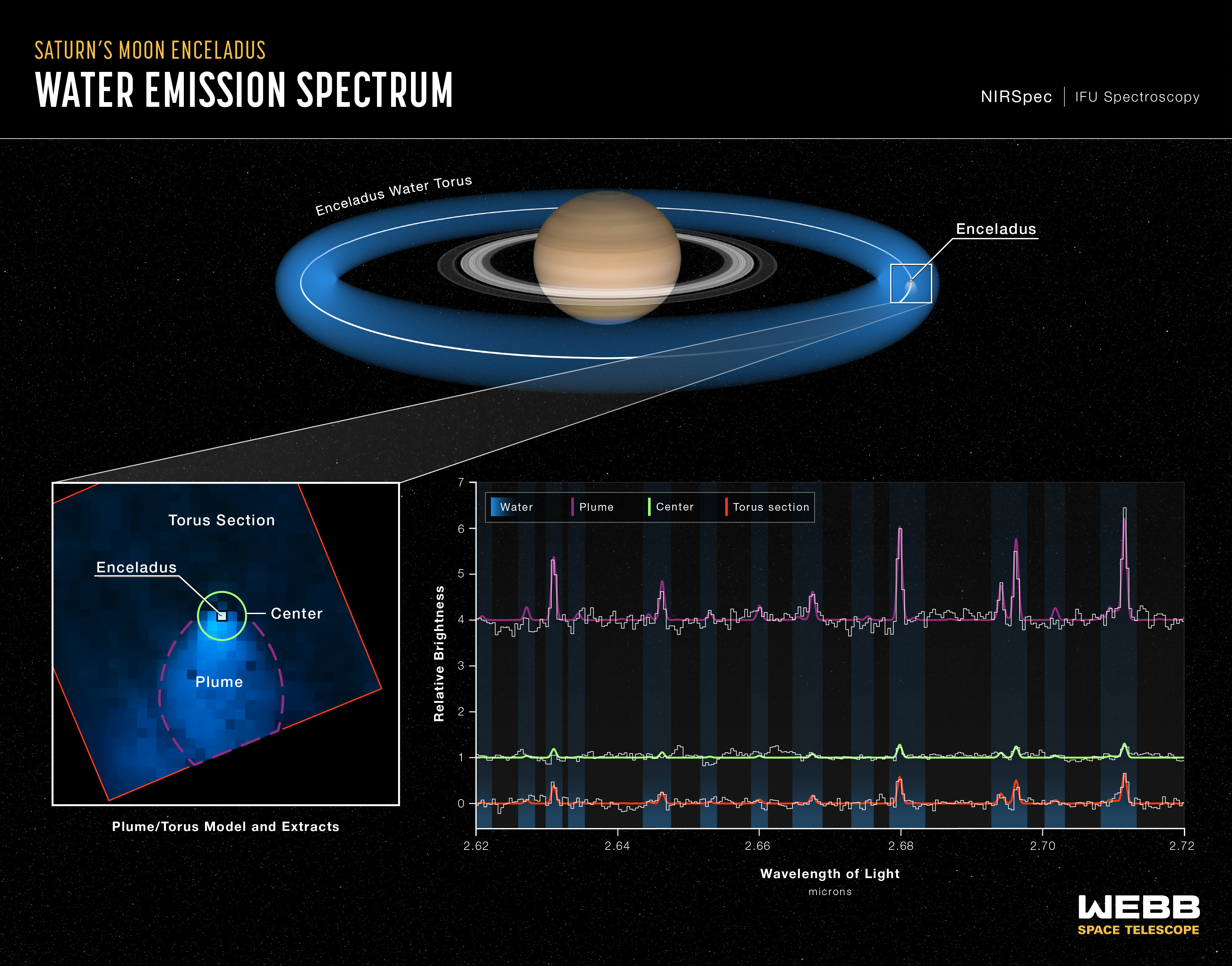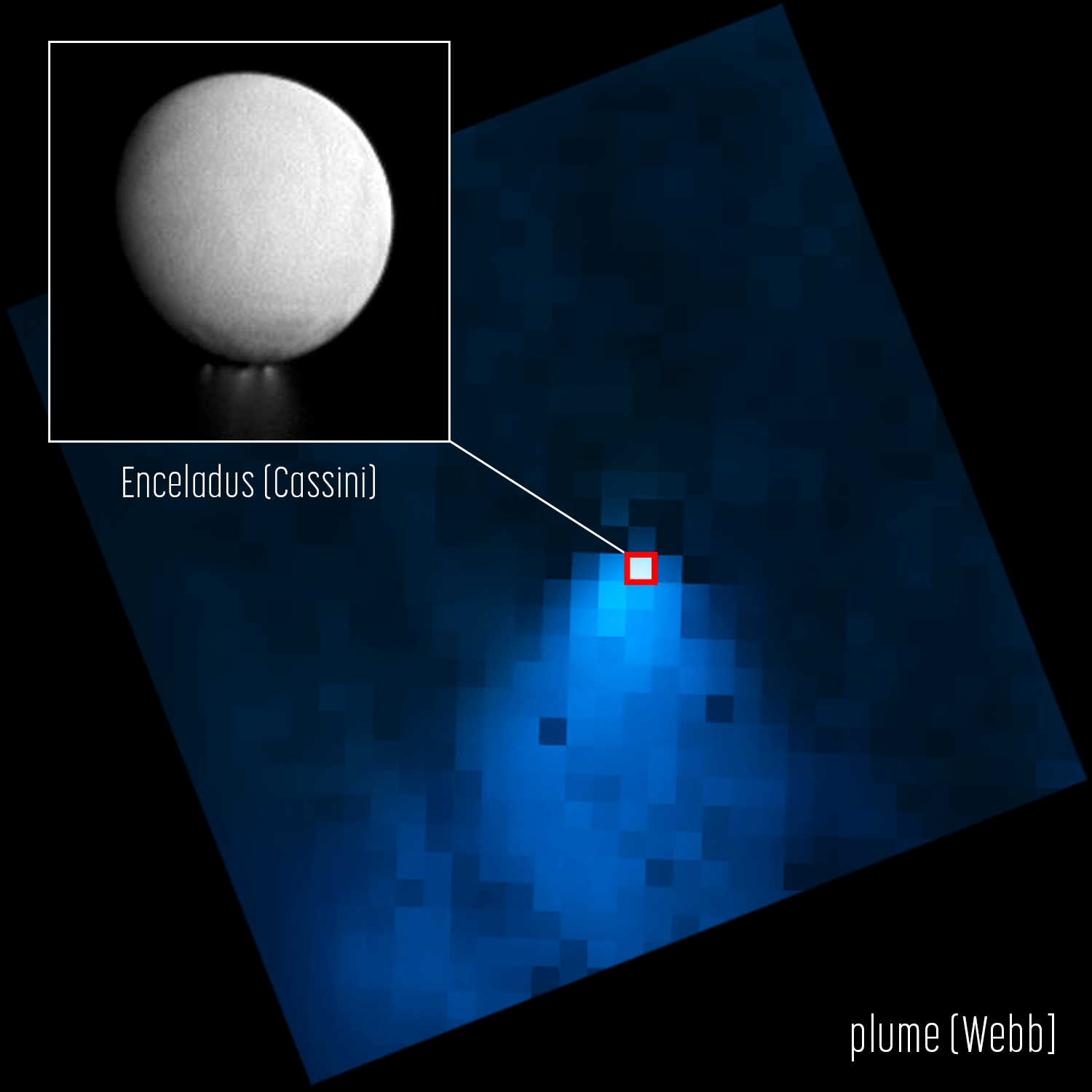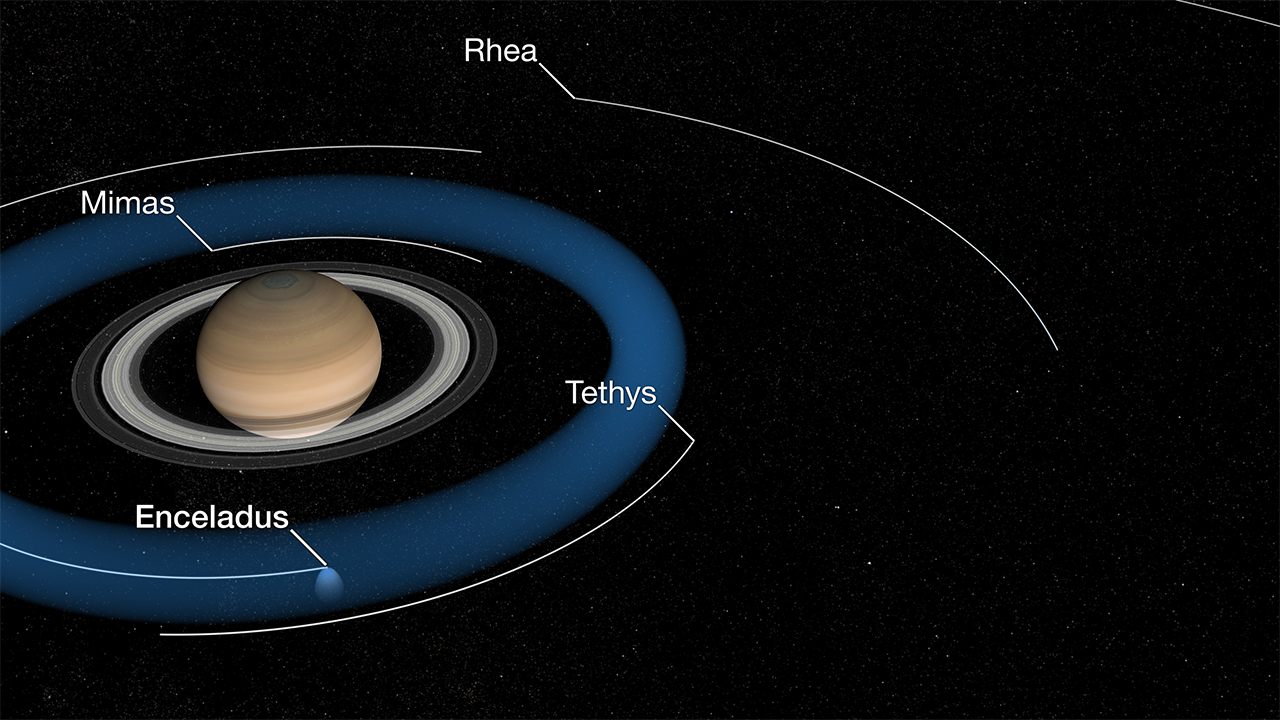1 min read
Enceladus Water Emission Spectrum (NIRSpec IFU)

NASA’s James Webb Space Telescope’s exquisite sensitivity and highly specialized instruments are revealing details into how one of Saturn’s moon’s feeds a water supply to the entire system of the ringed planet. Enceladus, a prime candidate in the search for life elsewhere in our solar system, is a small moon about four percent the size of Earth. New images from Webb’s NIRSpec (Near-Infrared Spectrograph) have revealed a water vapor plume jetting from the southern pole of Enceladus, extending out more than 20 times the size of the moon itself. The Integral Field Unit (IFU) aboard NIRSpec also provided insights into how the water from Enceladus feeds the rest of its surrounding environment.
Enceladus orbits around Saturn in just 33 hours, and as it does, it sprays water and leaves behind a torus—or ‘donut’—of material in its wake. This torus is depicted in the top diagram in light blue.
Webb’s IFU is a combination of camera and spectrograph. During an IFU observation, the instrument captures an image of the field of view along with individual spectra of each pixel in the field of view. IFU observations allow astronomers to investigate how properties—composition in this case—vary place to place over a region of space.
The unique sensitivity of Webb’s IFU allowed researchers to detect many lines of water originating from the torus around Enceladus and the plume itself. This simultaneous collection of spectra from the plume and the torus has allowed researchers to better understand their close relationship. In this spectrum, the white lines are the data from Webb, and the best-fit models for water emission are overlaid in different colors–purple for the plume, green for the area central to the moon itself, and red for the surrounding torus.
NIRSpec was built for the European Space Agency (ESA) by a consortium of European companies led by Airbus Defence and Space (ADS) with NASA’s Goddard Space Flight Center providing its detector and micro-shutter subsystems.
- Release DateMay 30, 2023
- Science ReleaseWebb Maps Surprisingly Large Plume Jetting From Saturn’s Moon Enceladus
- CreditGerónimo Villanueva (NASA-GSFC); Illustration: NASA, ESA, CSA, STScI, Leah Hustak (STScI)
Related Images & Videos

Enceladus Plume (Webb [NIRSpec] and Cassini Image)
An image from NASA’s James Webb Space Telescope’s NIRSpec (Near-Infrared Spectrograph) shows a water vapor plume jetting from the southern pole of Saturn’s moon Enceladus, extending out more than 20 times the size of the moon itself. The inset, an image from the Cassini orbiter,...

Enceladus Torus and Plume
Researchers using NASA’s James Webb Space telescope recently discovered a plume jetting out from the moon’s south pole more than 20 times the size of the moon itself. This animation illustrates how the moon’s water plumes feed the planet’s torus. By analyzing the Webb data,...
Share
Details
Laura Betz
NASA’s Goddard Space Flight Center
Greenbelt, Maryland
laura.e.betz@nasa.gov
Gerónimo Villanueva (NASA-GSFC)
NASA, ESA, CSA, STScI, Leah Hustak (STScI)































